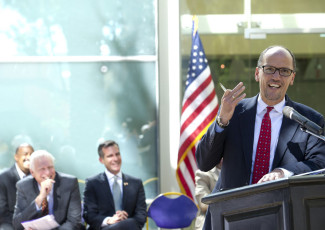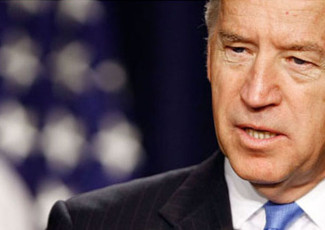N.C. Colleges Make Workforce Success Top Priority
By Corey Murray
April 18, 2014
Budding initiative aims to extend the state’s commitment to student success beyond the classroom.
When the North Carolina Community College System kicked off its SuccessNC initiative back in 2010, the goal was to use data and promising practices to create new policies that would raise the bar on student achievement across the state’s 58 community colleges.
Little more than three years and several accolades later, educators are promoting a new statewide collaboration, this one to prepare students for the world of work.
Originally dubbed NCReady4Work and later renamed Align4NCWorks, the program essentially divides the state into eight “prosperity zones,” within which educators and business partners will meet to better align training goals and outcomes. The name change comes as Gov. Pat McCrory earlier this month asked state lawmakers to give community colleges more discretion in how they spend money they have saved to train the state’s workforce.
“Many businesses tell us that we need more graduates in certain degrees and certain specialties, and we need to reward our schools for doing just that,” the governor told the Associated Press. The move is aligned with the governor’s new NCWorks workforce development initiative, which aims to bring community colleges, businesses and other stakeholders together throughout the state to combine training efforts, share the latest data, and more nimbly respond to economic and employment needs.
“By aligning our resources and focusing our services, North Carolina’s workforce system can open up new opportunities for our citizens and businesses,” said North Carolina Community College System President Scott Ralls in a press release.
Administrators believe Align4NCWorks will play an important role in that. Though it will likely take a few months to flesh out the details, the overall vision is ambitious: When all is said and done, educators and other stakeholders want North Carolina to boast the nation’s most employable workforce.
In a Charlotte Business Journal article, Linda Weiner, the college system’s vice president for engagement and strategic innovation, said the program will focus on bringing all of the relevant influencers — college administrators, business owners and representatives from the state departments of commerce and public instruction — to the table.
“We’re going to be taking a look at what roles each of those partners plays, finding opportunities to align them better and calling that the sweet spot,” she told the Journal.
Administrators are currently hosting a series of statewide “learning summits,” where stakeholders are invited to share ideas for collaboration, identify what’s standing in the way and begin hashing out a strategy for moving the program forward.
During each summit, 45 to 65 local and regional business and education leaders are participating in discussions guided by four overarching objectives:
- Alignment
- Responsiveness
- Engagement
- Accountability
Here’s a short educational presentation that explains the program prior to it being renamed:
“We have great examples of success among all those workforce development partners, but we also know that a lot of times success happens because there’s a particular person or college or workforce board pushing that initiative,” Weiner said in a follow-up story in the Triad Business Journal. “This is how we think we can bring those ideas out across the state in a scalable and meaningful way.”
The workforce–college connection
North Carolina isn’t the only state working to foster stronger ties between colleges and industry. Across the country, administrators, policymakers and other stakeholders are considering new partnerships designed to give students a boost in the job market.
In April, the American Association of Community Colleges released Empowering Community College to Build the Nation’s Future: An Implementation Guide. The 48-page resource provides practical examples of reform, broken out according to seven distinct recommendations, including an entire section dedicated to closing the American skills gap, with case studies of successful public–private partnerships.
In Michigan, administrators recently announced a new Career Jump Start program that’s intended to get colleges and businesses interested in helping students think about their career goals before stepping onto a college campus.
Miami Dade College offers at-risk and struggling students access to the nationwide Year Up program, which brings businesses and community colleges together to provide a mix of education and hands-on work experience.
In Washington, D.C., earlier this month, Vice President Joe Biden met with community college leaders at the AACC Convention, where he announced a new college and workforce apprenticeship consortium to better align community college and workforce education and training programs.
What do you think about the trend toward greater workforce collaboration?












